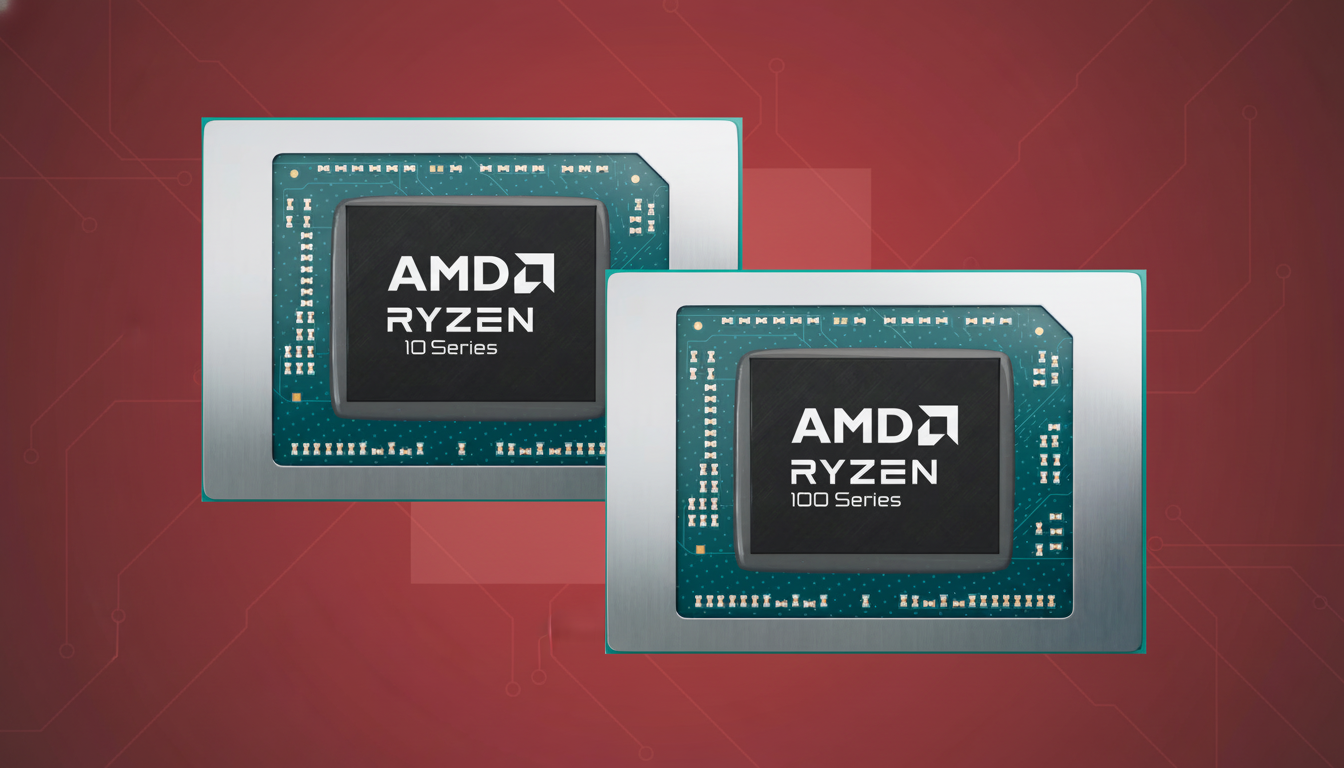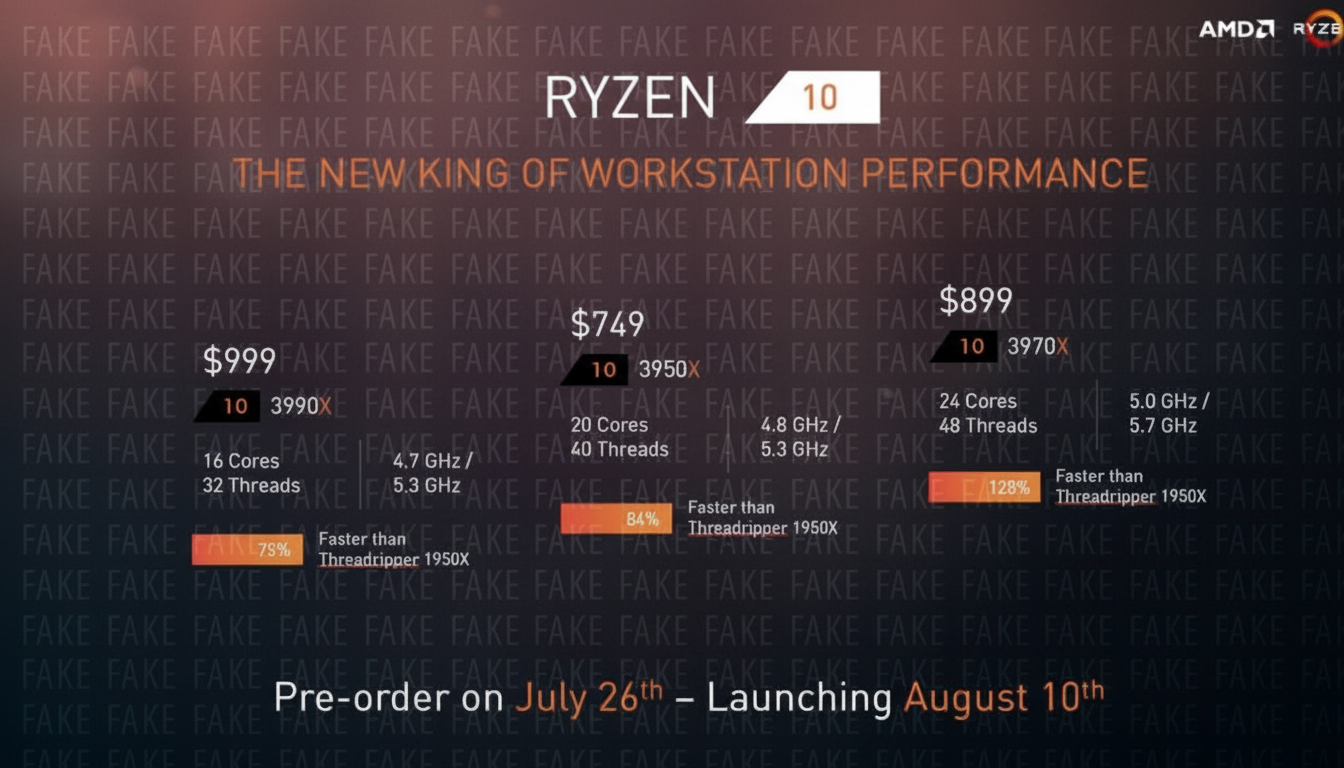AMD’s most recent game of sticker swapping has already turned tough CPU picking into one wild head-spinner of a maze. With the launch of the Ryzen 10 and Ryzen 100 parts alongside Ryzen AI 300 on mobile, and contemporary names like Ryzen 9000, 8000 and 7000 on desktop, the company now sells multiple generations under overlapping numbers. Many of these new players aren’t actually new at all — in fact, they are existing silicon that’s been given a fresh badge and paint job — and that makes it difficult for buyers to understand what exactly they’re receiving.
Why the names no longer match the architecture
For years, Ryzen numbers didn’t stray from AMD’s Zen architectures: Ryzen 2000 generally meant Zen+, Ryzen 5000 meant Zen 3. That tidy correlation has unraveled. The desktop stack today is the Ryzen 9000 on Zen 5, the Ryzen 7000 on Zen 4, Ryzen APUs with GPU blocks inside vary from what we have in mobile today. The venerable AM4 platform continues to host Ryzen 5000 (Zen 3) and 4000 (Zen 2). Now throw on top of that Ryzen 100 with Zen 3+ and Ryzen 10 with Zen 2.

Mobile is just as tangled. You have premium notebooks with Ryzen AI 300 built on Zen 5 with a beefy NPU, then mainstream will get access to Ryzen 8000 and even Ryzen 200 series parts based on Zen 4. Below them are the new Ryzen 100 (Zen 3+) and Ryzen 10 (Zen 2). The result: a collection of twin names that span four CPU architectures and multiple iGPU generations.
Actual SKUs reveal overlap across Ryzen generations
Some examples that are emblematic of the confusion: The Ryzen 3 110 is a 4C/8T processor with an AMD 660M iGPU, the Ryzen 7 170 has a bit more muscle at its disposal with an 8C/16T configuration and a beefier GPU (680M). Chips such as the Ryzen 3 30 and the Ryzen 5 40 pack in four cores and eight threads, along with a 610M iGPU. The “100” label would seem to promise an upgrade over the “10,” but architecture and graphics blocks beg to differ.
3DCenter, which has had a reliable track record on this kind of longer-range reporting in the past, says that some Ryzen 100 APUs overlap to varying degrees with previous-gen Ryzen 7000 mobile SKUs such as the 7735HS and 7335U, which is to say these are re-runs of parts that have been validated elsewhere before but are being given new, simpler names.
There’s nothing wrong with that in the abstract — mature silicon often offers excellent value — but it does tend to obscure generation-to-generation differences in CPU cores, cache, NPUs (neural processing units), and integrated graphics.
Why AMD might do this with Ryzen 10 and Ryzen 100
There is a strategic upside to consolidation. A compressed numbering scheme reduces the barrier for OEMs and retailers to establish systems in clean tiers, and it gives AMD some headroom to stay away from unwieldy five-digit names as flagship lines begin to approach four-digit counts. Stacking “Ryzen AI 300” at the top, with simplified “Ryzen 100” and “Ryzen 10” below, also makes a neat ladder that highlights AI-capable platforms in which NPUs live.

It’s also part of a larger industry playbook. Intel pivoted to Core Ultra and Core branding recently, focusing more on market segmentation than architectural alignment. Vendors are tuning labels to deliver greater shelf clarity and lifecycle management, even if those labels are no longer telling the full technical story.
The consumer risk of AMD’s simplified Ryzen labels
The danger is plain: a larger or newer-looking number can imply new silicon when it isn’t. Let’s say that I have a laptop with a Ryzen 7 170, which may sound more modern than the previous-gen Ryzen 7 7735HS, but they can be quite similar under the hood. Performance, battery life, AI acceleration, and media engines can all differ quite dramatically based on underlying Zen generation, iGPU architecture, and power envelope.
Market researchers such as Mercury Research have proven again and again that mix shifts between mobile and desktop, and value and premium, can literally march market share up by several points in one quarter. When naming clouds the size of this spec picture, the average consumer is more prone to buy on price or headline labels than on architecture — which might skew those movements and possibly muddle real-world expectations.
How to quickly decode a Ryzen label before buying
- First, identify the architecture. Zen 5, Zen 4, Zen 3/3+, or Zen 2 is the number one way to know what features you’re getting in terms of IPC, efficiency, and platform technology.
- Secondly, inspect the iGPU block — 610M, 660M, and 680M designations suggest an approximate RDNA generation and the graphics potential.
- Third, pay attention to U, HS, and HX suffixes for an idea of power targets and expected thermals.
- Finally, verify the NPU is present and what the TOPS are if AI workloads are important to you.
If a model number sounds unfamiliar, compare it with respected databases, vendor whitepapers, and teardown-focused sites such as Notebookcheck or 3DCenter. More often than not, there’s a one-to-one lineage to an older SKU that informs you of performance expectations and driver support.
What to watch next as AMD refines its Ryzen branding
AMD is coming up to a naming crossroads. Either the company starts doing five-digit flagships or the architecture stops pulling from names so aggressively. An architecture-forward, coherent badge would serve enthusiasts and mainstream buyers in equal measure. Until then, the best course of action is to buy based on core architecture, iGPU generation, NPU inclusion, and power class — not by the headline number on the box.

